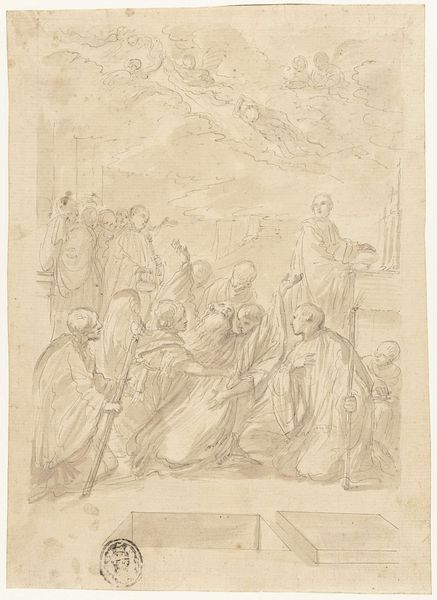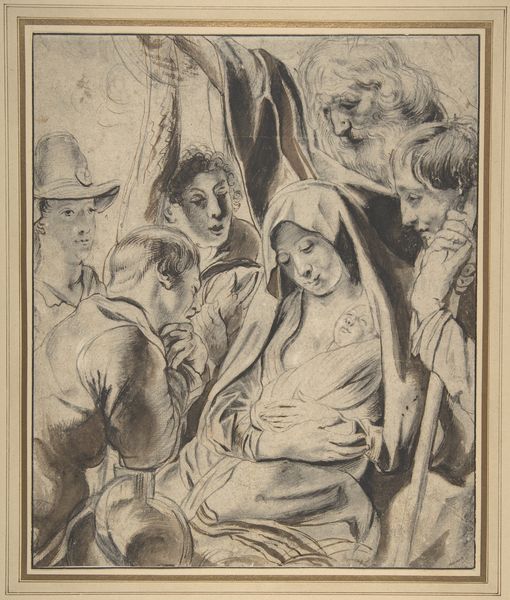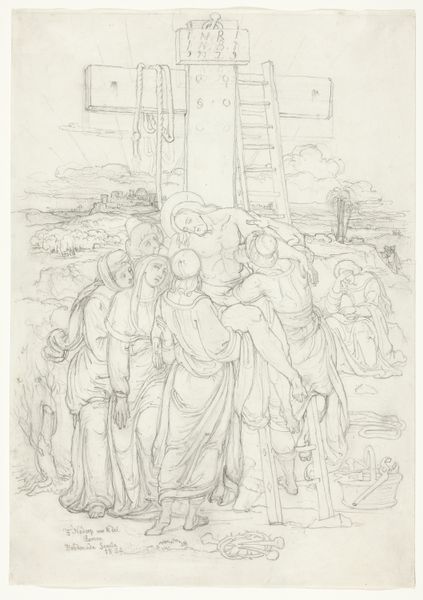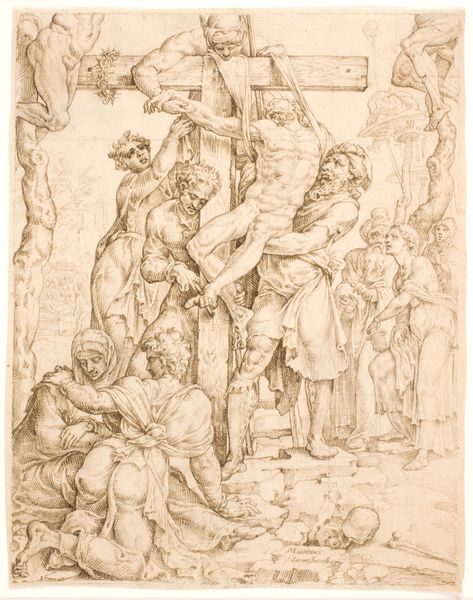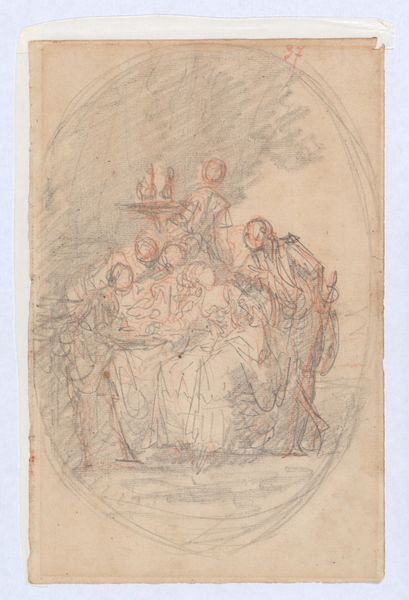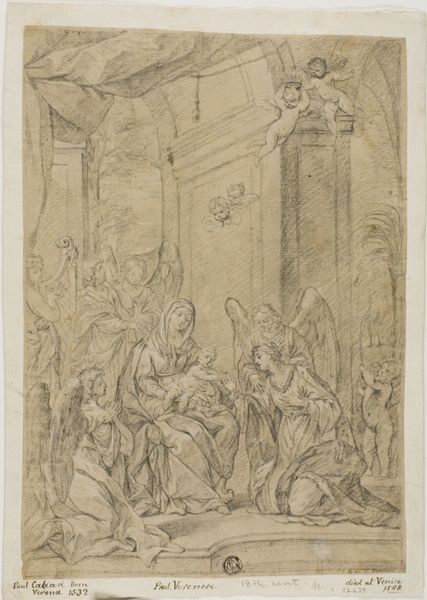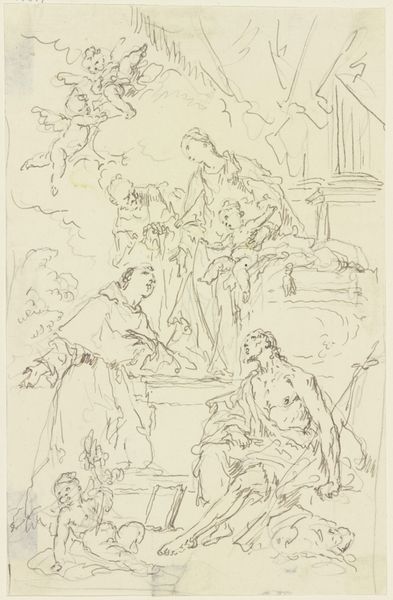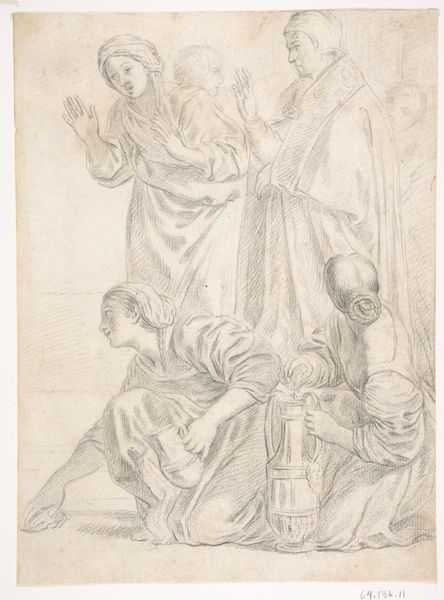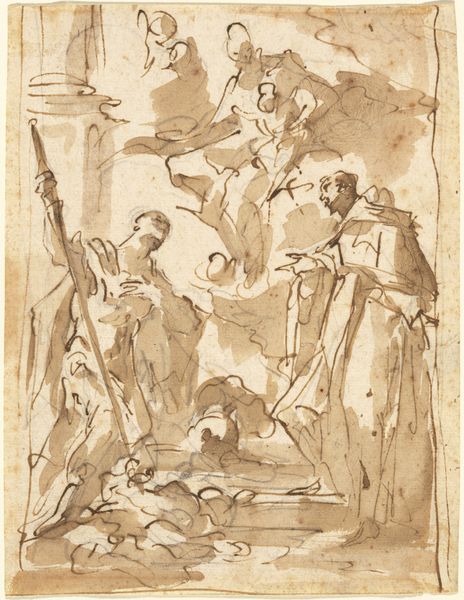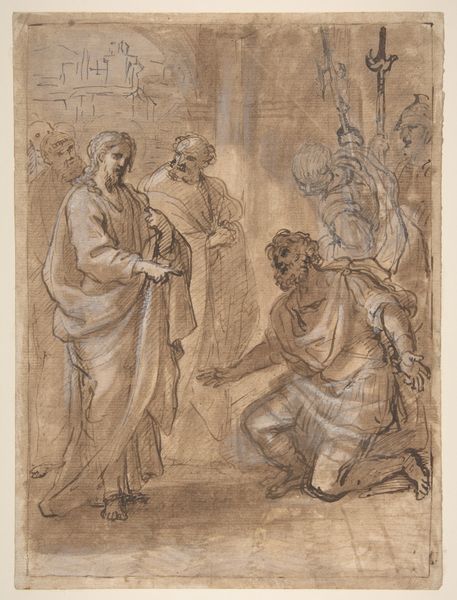
The Virgin and Child Adored by Monks and Others 1727 - 1738
0:00
0:00
drawing, ink
#
portrait
#
drawing
#
baroque
#
etching
#
figuration
#
ink
#
italian-renaissance
Dimensions: 16 3/8 x 11 1/4 in. (41.6 x 28.6 cm)
Copyright: Public Domain
Curator: Welcome. We’re standing before "The Virgin and Child Adored by Monks and Others," a pen and brown ink drawing by Giovanni Battista Tiepolo, created between 1727 and 1738. It resides here at the Metropolitan Museum of Art. Editor: Wow. Immediately, I feel this weight—but a gorgeous kind of weight. The composition is dense, with all these figures pressing in. There is almost a kind of hazy quality... are my eyes deceiving me? It almost evokes the smell of old paper and candle wax, if paintings could smell. Curator: Indeed, the brown ink lends itself to a monochromatic schema, where light and shadow are critical elements structuring the visual narrative. Tiepolo has captured a certain spatial complexity here—note how he guides the eye using contrasts. Editor: I am totally taken with that contrast, or the intention of it. Some of these lines are barely there. Tell me more, because I am instantly drawn in but am unsure why... it feels intentionally not quite done. Curator: What fascinates me is how Tiepolo exploits line and wash techniques to define form and volume within a relatively sparse field. Consider how this deployment underscores the devotional tone and establishes a hierarchical order. Observe how all figures converge spatially. It could be a play rehearsal almost... Editor: It really could be. What I adore about works on paper is how immediate the creation seems to be. Tiepolo has offered an opportunity here for real magic. So simple. But the sum effect? Divine. It makes me think about ephemerality versus that constant in art, religion. Curator: And that’s exactly what gives the image its dynamic force, its tension between presence and absence, which leads the viewer towards that conceptualization of divine grace. The texture itself reinforces that impression. Editor: Thanks, Tiepolo, you scamp. Yet another reason why museums are good for my soul. Thank you. Curator: Agreed, the artist evokes our need to study structure, purpose and its lasting visual impact in drawing.
Comments
No comments
Be the first to comment and join the conversation on the ultimate creative platform.
